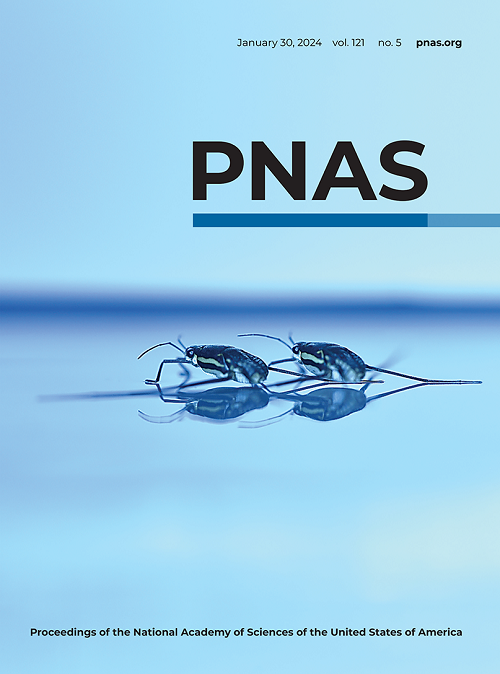TAOK1 promotes filament formation in HR repair through phosphorylating USP7
IF 9.4
1区 综合性期刊
Q1 MULTIDISCIPLINARY SCIENCES
Proceedings of the National Academy of Sciences of the United States of America
Pub Date : 2025-03-19
DOI:10.1073/pnas.2422262122
引用次数: 0
Abstract
Poly-ADP-ribose polymerase (PARP) inhibitors are vital therapeutic agents that exploit synthetic lethality, particularly effective in tumors with homologous recombination (HR) defects. However, broadening their clinical utility remains a significant challenge. In this study, we conducted a high-throughput kinase inhibitor screen to identify potential targets exhibiting synthetical lethality with PARP inhibitors. Our results show that thousand and one amino acid protein kinase 1 (TAOK1) plays a pivotal role in the DNA damage response by phosphorylating ubiquitin specific peptidase 7 (USP7), thereby promoting its enzymatic activity and preventing the ubiquitylation and subsequent degradation of RAD51, a crucial protein in the filament formation of HR repair. Notably, genetic depletion or pharmacological inhibition of TAOK1, as well as blocking peptide targeting the USP7 phosphorylation site, impaired USP7 function, leading to RAD51 degradation, disruption of HR repair, and increased tumor cell and sensitivity to PARP inhibition. This study highlights TAOK1 as a critical regulator of HR repair pathway in human cancer cells and presents a therapeutic strategy overcoming resistance to PARPi inhibitors. These findings support the potential clinical application of combining PARP inhibitors with TAOK1 inhibition or peptide treatment to improve therapeutic outcomes.TAOK1通过磷酸化USP7促进HR修复中的丝形成
聚adp核糖聚合酶(PARP)抑制剂是重要的治疗药物,利用合成致死性,特别有效的肿瘤同源重组(HR)缺陷。然而,扩大其临床应用仍然是一个重大挑战。在这项研究中,我们进行了高通量激酶抑制剂筛选,以确定具有PARP抑制剂合成致死性的潜在靶点。我们的研究结果表明,一千零一个氨基酸蛋白激酶1 (TAOK1)通过磷酸化泛素特异性肽酶7 (USP7)在DNA损伤反应中起关键作用,从而促进其酶活性,防止RAD51的泛素化和随后的降解,RAD51是HR修复中丝形成的关键蛋白。值得注意的是,TAOK1的基因缺失或药物抑制,以及针对USP7磷酸化位点的阻断肽,会损害USP7的功能,导致RAD51降解,破坏HR修复,增加肿瘤细胞和对PARP抑制的敏感性。本研究强调了TAOK1是人类癌细胞HR修复途径的关键调节因子,并提出了克服PARPi抑制剂耐药性的治疗策略。这些发现支持PARP抑制剂联合TAOK1抑制或肽治疗的潜在临床应用,以改善治疗结果。
本文章由计算机程序翻译,如有差异,请以英文原文为准。
求助全文
约1分钟内获得全文
求助全文
来源期刊
CiteScore
19.00
自引率
0.90%
发文量
3575
审稿时长
2.5 months
期刊介绍:
The Proceedings of the National Academy of Sciences (PNAS), a peer-reviewed journal of the National Academy of Sciences (NAS), serves as an authoritative source for high-impact, original research across the biological, physical, and social sciences. With a global scope, the journal welcomes submissions from researchers worldwide, making it an inclusive platform for advancing scientific knowledge.

 求助内容:
求助内容: 应助结果提醒方式:
应助结果提醒方式:


